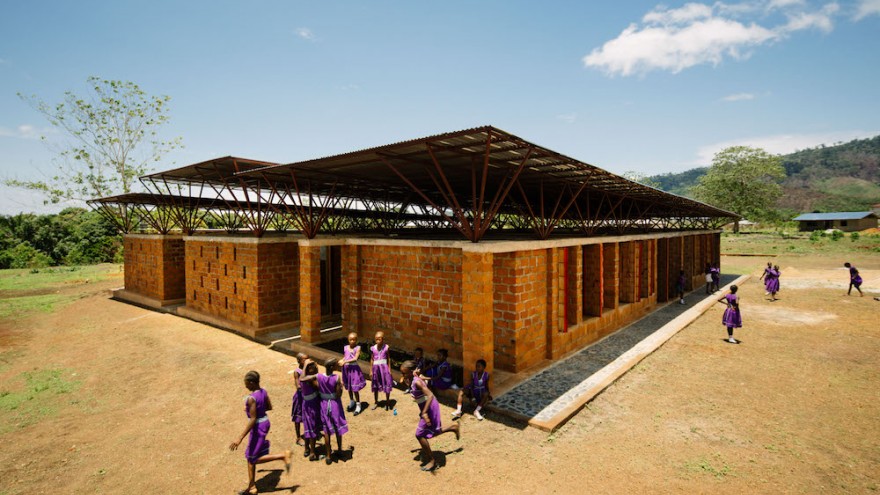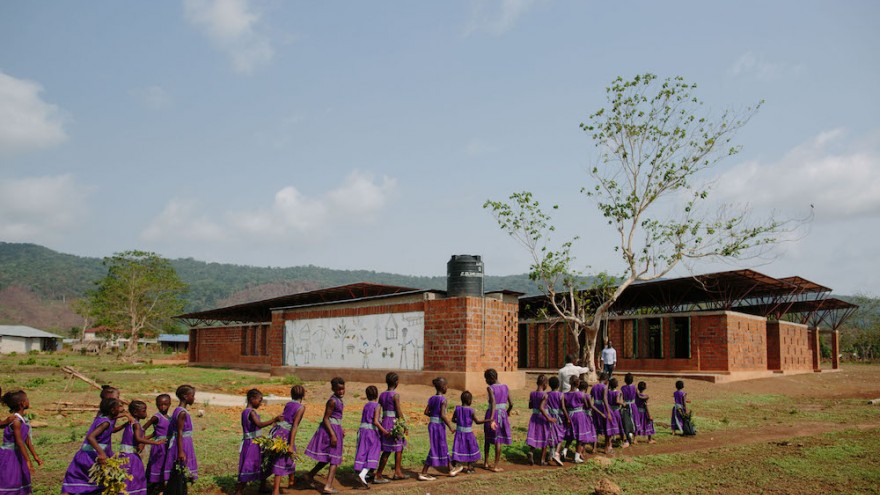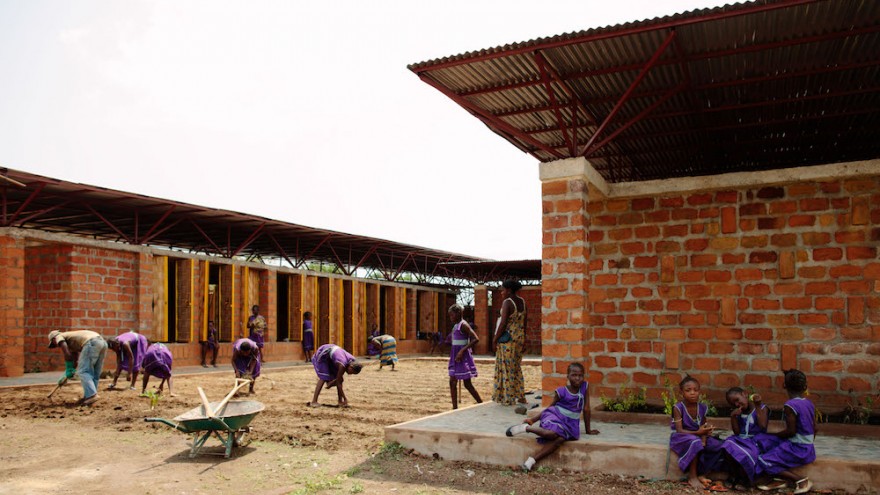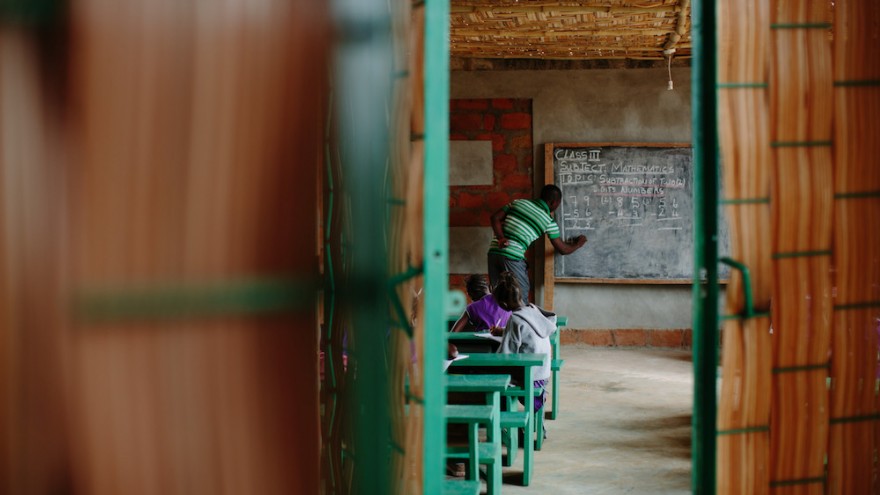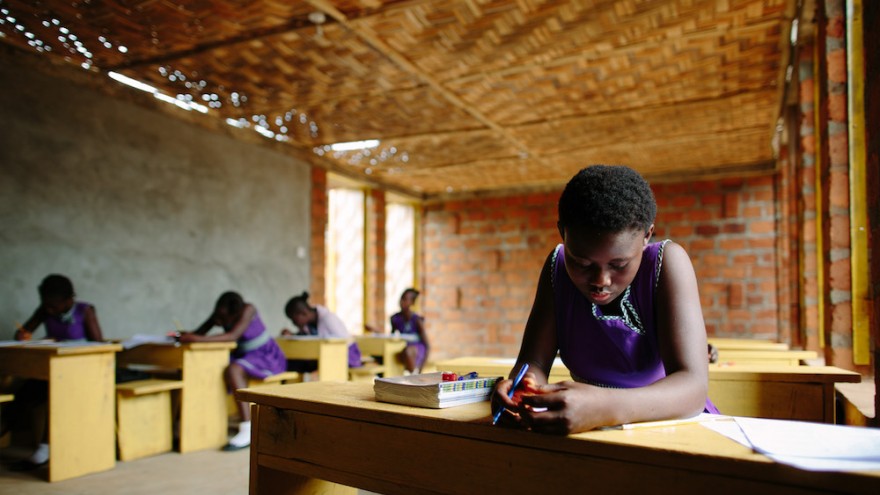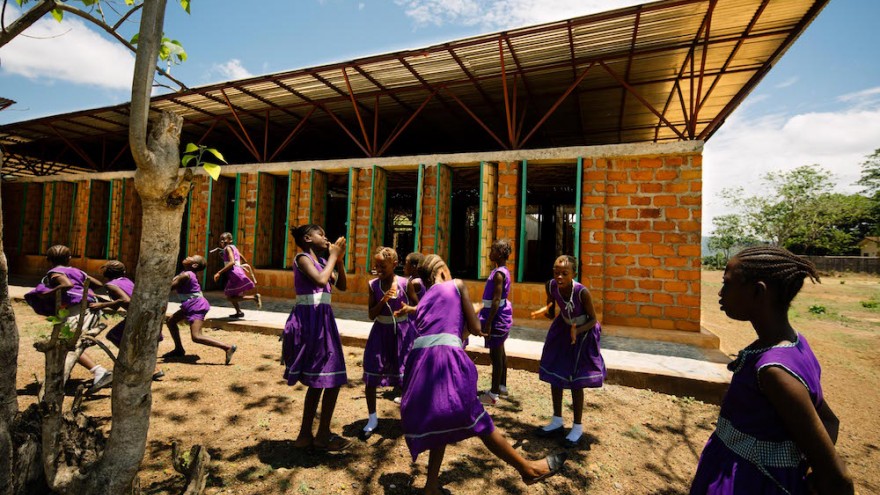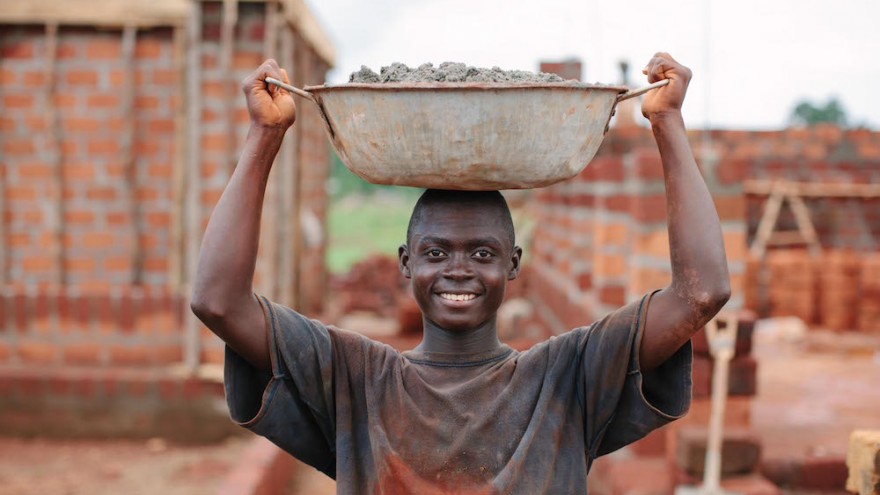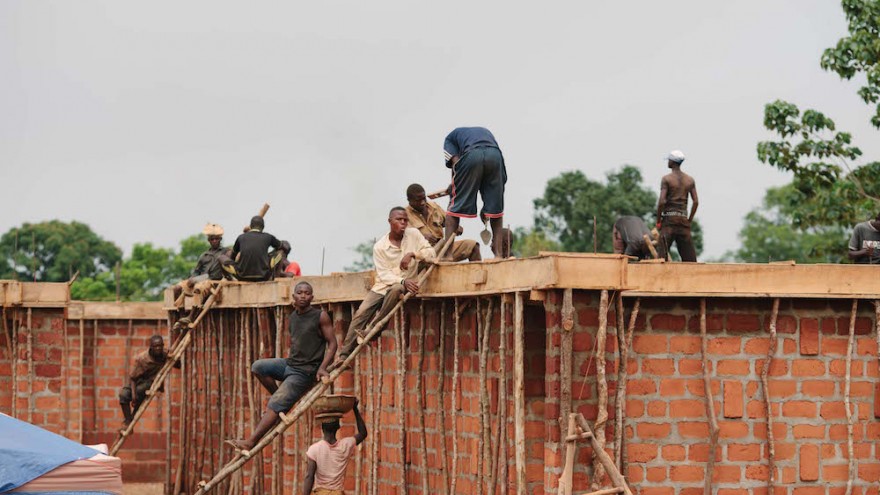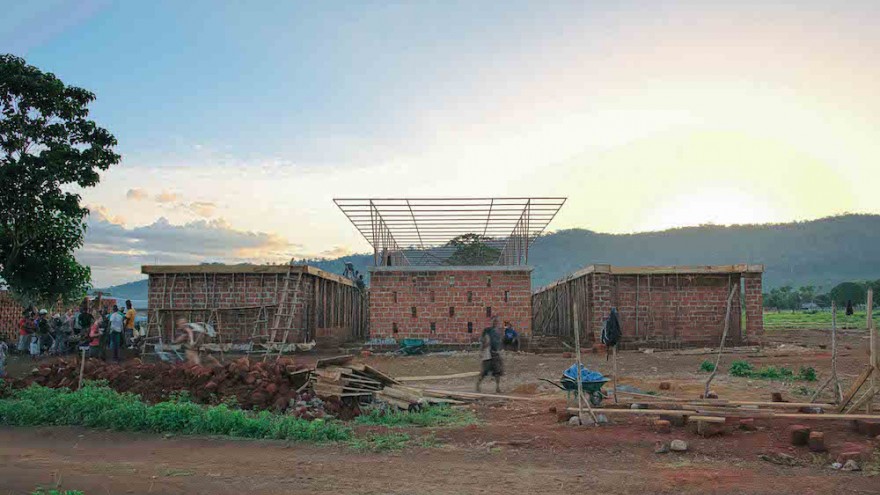In 2014, Glasgow-based humanitarian design and construction organisation Orkidstudio started the construction of the Swawou School for Girls in Kenema, located in the eastern region of Sierra Leone. The school is an initiative of the Swawou School Foundation, an organisation that aims to provide a safe environment and free primary education for girls from disadvantaged backgrounds. Sadly, development of the building was brought to a halt four weeks before completion when the first confirmed cases of the Ebola virus hit the region. Now, two years later, Orkidstudio is happy to announce that the school has finally opened its doors to its first group of pupils.
Founding director of Orkidstudio James Mitchell considers their work to be more about building up communities with entrepreneurial and construction skills and less about architecture. On the Swawou School project, his team employed about seventy men and women from the local community every day on the site, equipping them with architectural techniques that can be taught to others and used to build more community facilities or homes.
When designing the school, the architects considered how the design could lower the daily running costs of the building and subsequently, secure the school’s longevity. To this end, the school has been built to respond to climatic conditions of the region.
The floating metal roof has been structured to optimise natural ventilation, and its angled gradient works to deflect monsoon rain into a series of water collection channels below. A woven ceiling beneath the roof helps quieten the sound of the rain on the metal during class time in the rainy season. Shuttered openings provide added ventilation and a method of controlling the amount of natural light in the classrooms. The size of the classrooms are significantly larger than what is commonly found in Sierra Leone and they have been arranged to form a large sheltered courtyard and various outdoor spaces. These areas are important for providing external circulation and spaces for socialising. The uncovered courtyards serve as school gardens, which involve the children in growing plants.
When construction resumed in January 2016, the site was overgrown with weeds and long grasses, and the social and economic impact of the virus on the community was and still is devastating. But now that the school has officially opened, up to 120 young girls have access to free education in a space that inspires learning and growth.
Mitchell admits that the country still has a long way to go to recover from the effects of war, disease and poverty but he feels building communities is a good place to start.
“In this case, a new building has opened its doors to a cohort of excited young school students, offering new jobs to the local community” says Mitchell. “It might just stand for something far more than the materials it’s built from.”

